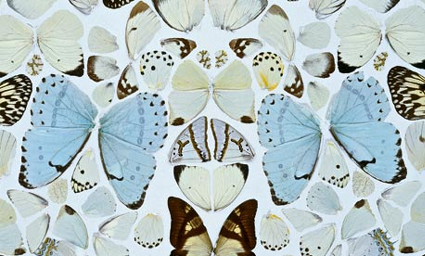Damien Hirst at Tate Modern. By Andrew Graham-Dixon.
Clue: Damien Hirst (anag.)
Answer: Is Mr Death in?
He certainly is. Tate Modern’s retrospective of Hirst’s work makes a cast-iron case for the artist’s perennial, obsessive, all-excluding morbidity.
Exhibit A, Room 1, is the photograph Hirst had taken of himself, aged 25, next to the decapitated head of a human cadaver in the Anatomy Department of Leeds University. The dead man’s expression is frozen in a grimace, while young Damien’s smile is itself a desperate rictus, full of the foreknowledge that one day he will be dead too. With Dead Head (1991), as he concisely called the picture, is only the start of it. After that it is more, much more, of the same. Death, death, death and more death: as many kinds of death as an eskimo’s types of snow.
The star attraction of Room 2, A Thousand Years (1990), has good claims to be the definitive Hirst. Here is the cycle of life and death in microcosm, confined within a vitrine. A cow’s severed head lies in a congealed pool of its own blood. Maggots, in a white box, hatch into flies. The flies feed on the cow’s blood. An Insect-o-cutor machine regularly zaps them, depositing their black bodies in a stainless steel tray. It is ugly now but will be uglier still in a few weeks’ time, when the putrefaction has really set in and the bodies of the flies will cluster as thick as raisins in a jar.
And then (Room 3) there is The Physical Impossibility of Death in the Mind of Someone Living (1991). The grinning tiger shark floats, suspended, in a tank of formaldehyde. What seems at first to be an image of daunting invulnerability, the killer about to devour its prey, is in...


